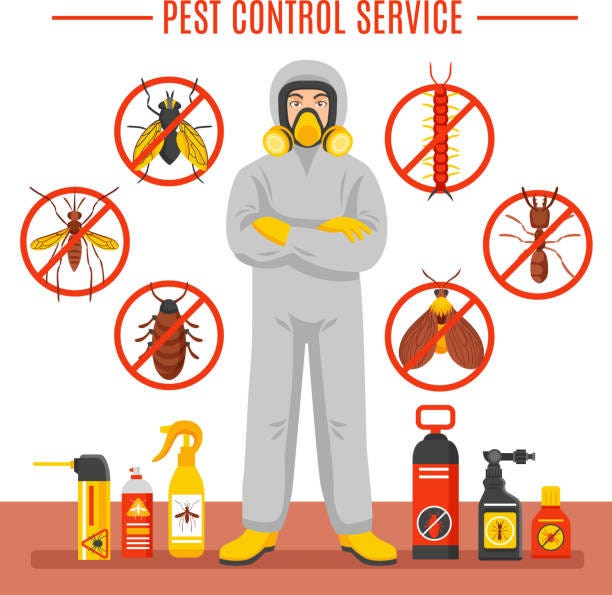A1 Bed Bug Exterminator Charlotte - Efficient and Inexpensive Services
A1 Bed Bug Exterminator Charlotte - Efficient and Inexpensive Services
Blog Article
Bed Insect Treatment Breakdown: Contrasting Chemical Vs. Non-Chemical Solutions
In the world of parasite control, specifically when handling the relentless concern of bed insects, the choice between chemical and non-chemical therapy services can be a crucial one. Both strategies offer distinct advantages and drawbacks, influencing aspects such as effectiveness, security factors to consider, and total expense. By taking a look at the nuanced details of each technique, a clearer understanding of which path to seek in dealing with a bed bug problem can be attained.
Efficiency of Chemical Therapies
Chemical treatments for bed insect infestations have been widely identified for their potent and rapid efficacy in eliminating these pests. When considering the efficiency of chemical therapies, it is essential to recognize that they can offer a fast and complete remedy to a bed pest issue.
Moreover, chemical therapies have the advantage of offering residual effects, implying that they can remain to eliminate bed insects also after the preliminary application. This residual activity is especially useful in combating any possible re-infestations. Additionally, the quick action of chemical therapies can bring relief to people facing extreme bed insect infestations, permitting them to gain back control of their home rapidly.
Safety And Security Worries With Chemical Solutions
When making use of chemical services for bed bug therapy is making certain the security of passengers and the setting,One essential element that calls for careful consideration. While chemical therapies can be reliable in eliminating bed pests, they may present threats if not managed effectively. Among the key safety and security interest in chemical remedies is the possible damage they can create to human wellness. Direct exposure to particular chemicals made use of in bed pest therapies can bring about respiratory system issues, skin inflammation, or other unfavorable responses, specifically in individuals with pre-existing conditions or sensitivities. Additionally, improper application or dose of chemical pesticides can result in hazardous residues sticking around in the cured location, posing lasting wellness risks to passengers.
Furthermore, the environmental impact of chemical services is an additional substantial factor to consider. Some chemicals used in bed insect therapies might be hazardous to valuable insects, wildlife, and ecological communities if they seep right into the dirt or water systems. It is crucial to use chemical therapies deliberately, adhering to safety and security standards, and thinking about much less toxic choices to alleviate these threats and make certain the effective and safe administration of bed bug problems.
Advantages of Non-Chemical Strategies
Taking into consideration the prospective safety and security issues and environmental influence associated with chemical services for bed bug therapy, checking out non-chemical methods presents an appealing choice with several unique benefits. Non-chemical therapies are ecologically friendly, as they do not contribute to air or water air pollution, making them a lasting selection for bug control.
Furthermore, non-chemical services can be reliable in targeting bed bugs, consisting of hard-to-reach locations where chemical therapies might not permeate - A1 pest control charlotte nc bed bugs. Approaches such as warmth therapy, vacuuming, steam cleansing, and mattress coverings give complete eradication without the use of hazardous chemicals.
Limitations of Non-Chemical Treatments

In addition, non-chemical therapies frequently call for numerous applications to achieve successful elimination. This can be time-consuming and may not constantly ensure complete elimination of all bed insects and their eggs, especially in hidden or hard-to-reach locations.
Additionally, the success of non-chemical therapies greatly depends on appropriate execution and thoroughness, which can be testing for individuals without specialist experience. Inadequate application of non-chemical approaches might result in insufficient eradication, causing relentless infestations and the need for extra therapies.
Therefore, while non-chemical treatments have their benefits, it is necessary to recognize these limitations and consider them when establishing the most effective strategy for additional info managing bed pest infestations.
Price Comparison: Chemical Vs. Non-Chemical Options
Offered the restrictions related to non-chemical therapies, an essential aspect to assess in the context of bed insect management is the price comparison between chemical and non-chemical choices. Chemical therapies generally involve the application of insecticides by specialists, which can vary from $250 to $900 per space, depending upon the seriousness of the infestation and the size of the location to be dealt with. On the other hand, non-chemical treatments like warmth treatment or vapor can be extra expensive, with prices varying from $1,000 to $6,000 for an entire home. While the initial expense of chemical therapies may seem lower, multiple therapies may be required to completely get rid of the invasion, possibly increasing the general expense. On the other hand, non-chemical alternatives might offer a much more environment-friendly and lasting option, although they can be cost-prohibitive for some people. Ultimately, when considering the expense of bed pest treatment choices, it is necessary to consider the in advance expenditures against the effectiveness and long-term sustainability of the chosen technique.
Verdict

Taking into consideration the potential safety and security concerns and environmental impact connected with chemical remedies for bed pest therapy, exploring non-chemical methods presents an appealing alternative with several unique advantages.Provided the constraints associated with non-chemical therapies, an important facet to review in the context of bed insect management is the expense contrast between chemical and non-chemical alternatives. In contrast, non-chemical treatments like warmth therapy or vapor can be a lot more costly, with costs ranging from $1,000 when to call pest control to $6,000 for a whole home. While the preliminary expense of chemical treatments may seem reduced, several therapies may be required to totally eliminate the invasion, possibly increasing the general cost.In final thought, when contrasting chemical and non-chemical bed pest therapy options, it is crucial to think about efficiency, safety and security, advantages, constraints, and cost.
Report this page